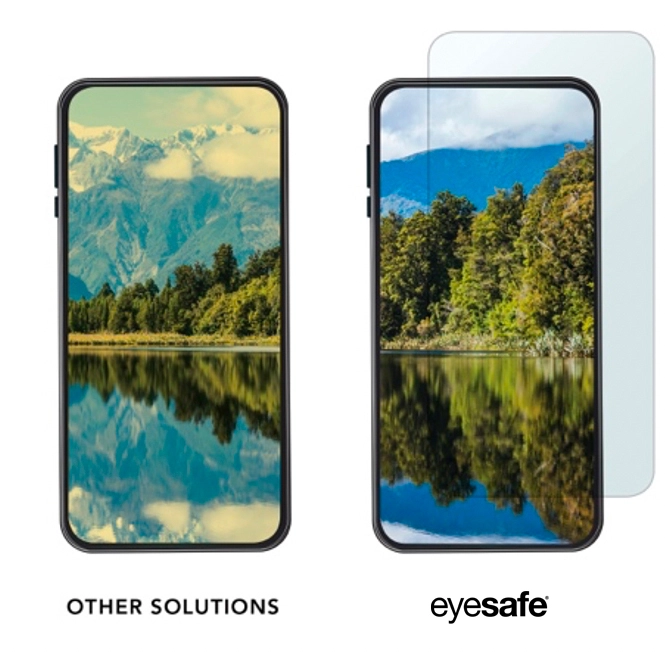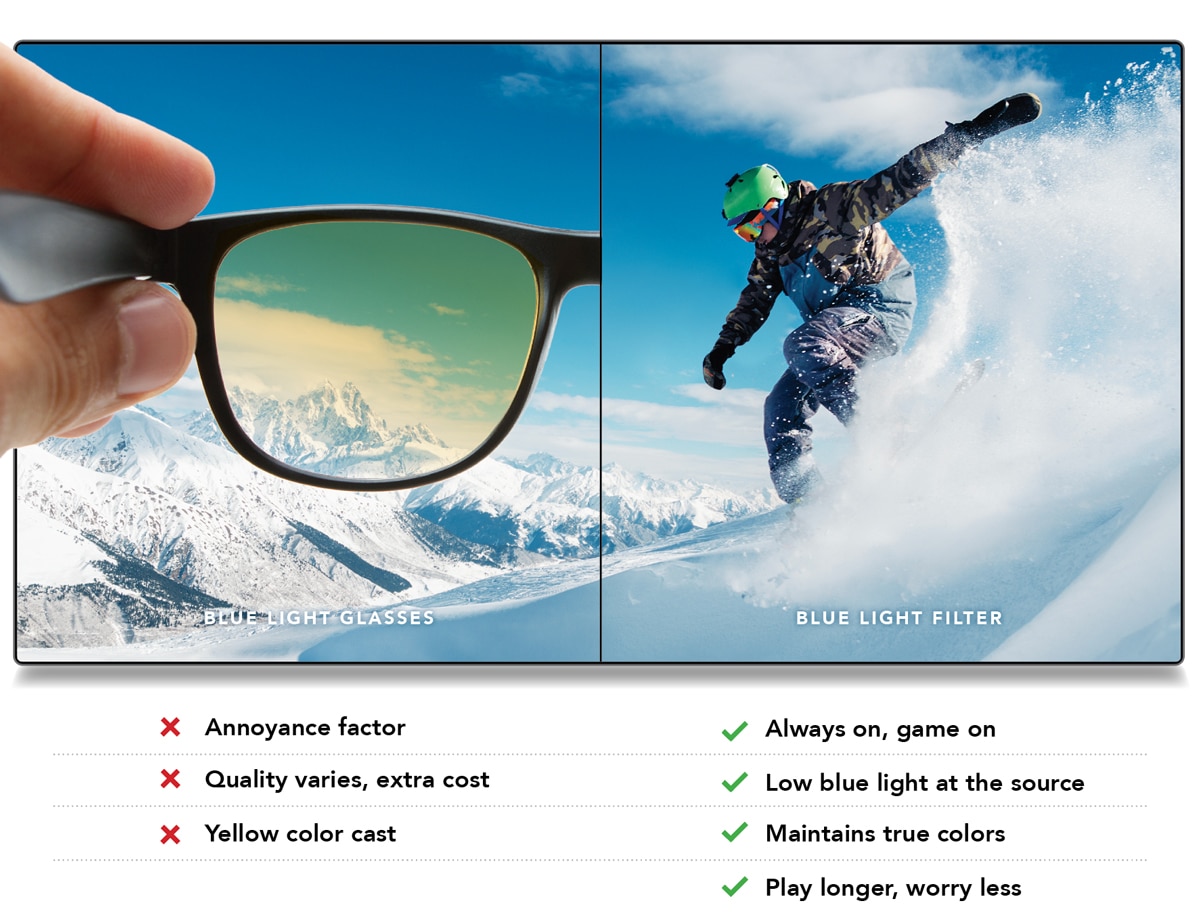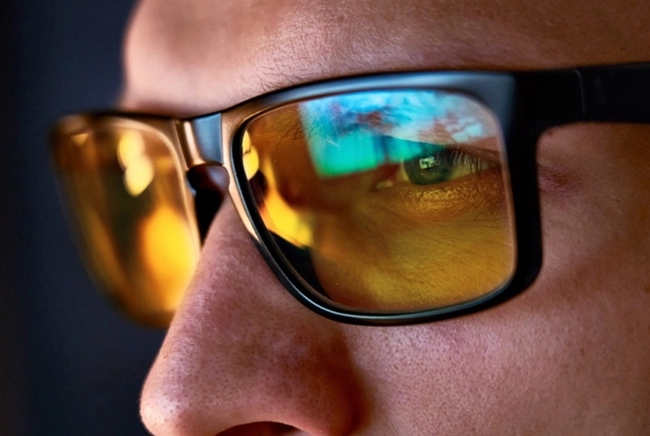It’s no secret that we live in a world filled with digital devices. We all have our own vice when it comes to screen time. Between social media, texting, hybrid work and learning; our average daily screen time has increased tremendously, now exceeding 13 hours per day.1
We are exposed to blue light every day from a variety of sources, both natural and artificial. In its natural form, we get blue light from sunlight. It plays an important role in the body by suppressing the production of melatonin, which increases our alertness in the morning and maintains our circadian rhythms. Similarly, as the sun sets in the evening, our eyes take in less blue light, which once again signals the production of melatonin and enables us to sleep. Research has also shown that blue light boosts alertness, helps memory and cognitive function, and elevates mood.2
The artificial sources of blue light include all digital devices, such as phones, laptops, computer monitors, tablets, and TVs. Unlike sunlight, which wanes in intensity as the day progresses, artificial blue light maintains its intensity and brightness. Also concerning people are much closer to their devices and use them for prolonged periods, day after day. That’s raised concerns about blue light exposure from digital screens. There is a wealth of research on the negative effects of blue light and sleep quality. While more research is needed to pinpoint the impact on eye health, in-vivo and in-vitro studies provide evidence that there are potential risks.
Luckily there are products that help reduce our blue light exposure from digital devices.
So, what are the options?
There are several options to filter out blue light, but we’ll discuss two of the most popular choices in this post: blue light glasses and blue light filters. Let’s weigh out the pros and cons.
Blue Light Glasses
Blue light glasses have become popular, but are they the best choice? Dagny Zhu, MD, is an acclaimed Cornea, Cataract, and Refractive Surgeon and Medical Director and Partner at NVISION Eye Centers in California. She weighs in on the subject:

“The problem with blue light glasses is they require a behavior change; you have to wear them for them to be effective. It seems like a no-brainer, but for our kids, compliance can be a real challenge. Either they forget them, don’t like wearing them, or choose not to wear them. If you don’t have prescription lenses, it can be a hassle to find ones that block blue light. All the companies making blue light glasses claim to provide effective protection, when in fact some may block a tiny portion of blue light. It can be difficult to know how much protection you’re really getting.”
As Dr. Zhu calls out, blue light glasses may provide protection, but there is no regulation on the industry. That means consumers can pick up a $20 pair of glasses and they may provide little-or-no blue light filtration. Or they could provide substantial protection. There is no way to know unless you have specialized equipment to test the lens. Luckily, at Eyesafe, we have the right equipment, so we tested an array of commercially available blue light glasses. We won’t name names, but let’s just say most of the glasses missed the mark.
Our testing utilizes a spectrophotometer in the Eyesafe Lab to test transmittance and absorbance from 380-780 nanometers. This data is used to calculate blue light filtration, color shift and reduction in brightness. Of the 8 different products we tested, the glasses with significant blue light filtration had an obvious yellow tint. Yellow tinting is a common way to reduce blue light because the yellow absorbs blue light, while allowing other wavelengths to pass through. Unfortunately, this also means the screens you look at will look yellow or amber, which is less than ideal. On the other end of the spectrum, there were several blue light glasses that provided little filtration, so for all practical purposes they don’t deliver on their promise to filter out or reduce blue light exposure.
With blue light glasses, there can be a lot of compromises. In addition to the need to trade off on color for effective blue light filtration, users need to wear the glasses to see potential benefits. If you wear glasses all the time, adding blue light filtration to your prescription lenses may be an option for you. If not, having to remember to use them and the actual comfort of wearing them all day can be a pain.

Blue Light Screen Protectors
Blue light filters have gained a lot of traction with consumers because they provide an “always-on” solution to reduce blue light at the source. They are usually an affordable solution, easy to install on any device, and can effectively reduce blue light exposure. Like glasses though, not all blue light filters are created equal. Some may turn your screen yellow or provide minimal protection, so there are a few things to look for:
• Focused filtration at 435-440 nanometers, deemed the most toxic blue light region by ANSI standards3
• Rebalanced color across the light spectrum so you don’t have to view the world through yellow-colored glasses
• Independently tested/ validated by 3rd party lab
• Developed with the input of eye doctors, who have a vested interest in your eye health.
Eyesafe is focused on creating products that are performance tested to effectively reduce blue light while preserving vibrant color. We pull in the expertise of a global panel of optometrists and ophthalmologists with decades of experience in eye health and patient care.
The Verdict:
Blue light glasses may be an option for reducing blue light, but overall, the industry lacks regulation, so you really don’t know what you’re getting when you pick up a pair at your local retailer. For those of us who don’t wear prescription lenses (or, if you want to layer blue light products), blue light screen filters developed with eye doctors and independently certified, like those from Eyesafe, deliver always-on blue light filtration while preserving vibrant color.
Sources
1. Eyesafe estimate based on Nielsen Q3 2019 Total Audience Report
2. What is Blue Light, Eyesafe 2021
3. Peak toxic blue light is defined as the wavelength of 435-440 nanometers, which have been shown to cause damage to photoreceptor cells in the retina according to the American National Standards Institute (ANSI) chart showing the blue light hazard weighting factor across the blue light spectrum.
About Eyesafe
Eyesafe Inc. is the worldwide supplier of advanced blue light mitigating technology, solutions, and standards. With pioneering products and services, in collaboration with leaders in healthcare, Eyesafe is shaping the future of low blue light consumer electronics. Eyesafe® Standards, Eyesafe® Technology, and the associated intellectual property portfolio is developed by a world-class team of eye doctors, engineers, and scientists with decades of experience in electronics, display materials, light management, optometry, and ophthalmology. The Eyesafe brand is trusted by consumers and integrated in millions of digital devices from Dell, HP, Lenovo, ZAGG and others. Eyesafe was recently ranked #5 in the computer hardware category in the Inc. 5000 Fastest-Growing Private Companies in America. Learn more at eyesafe.com

